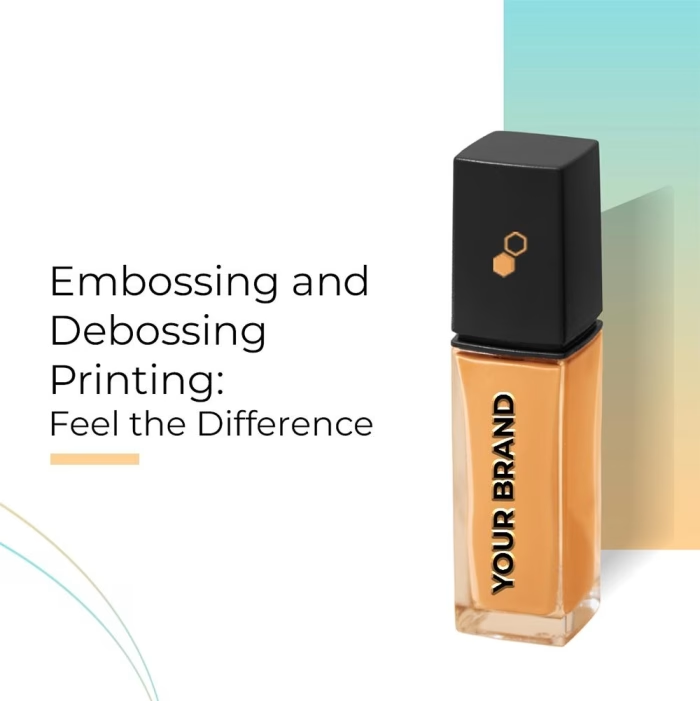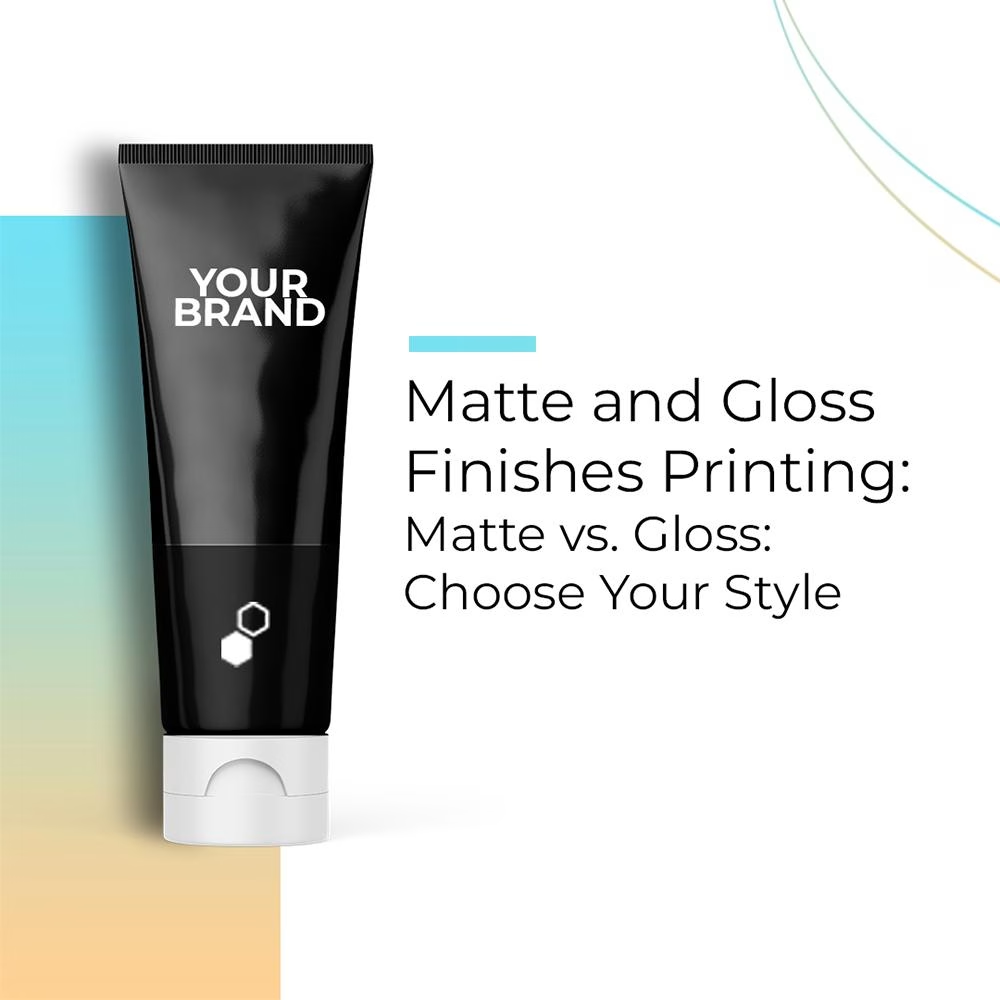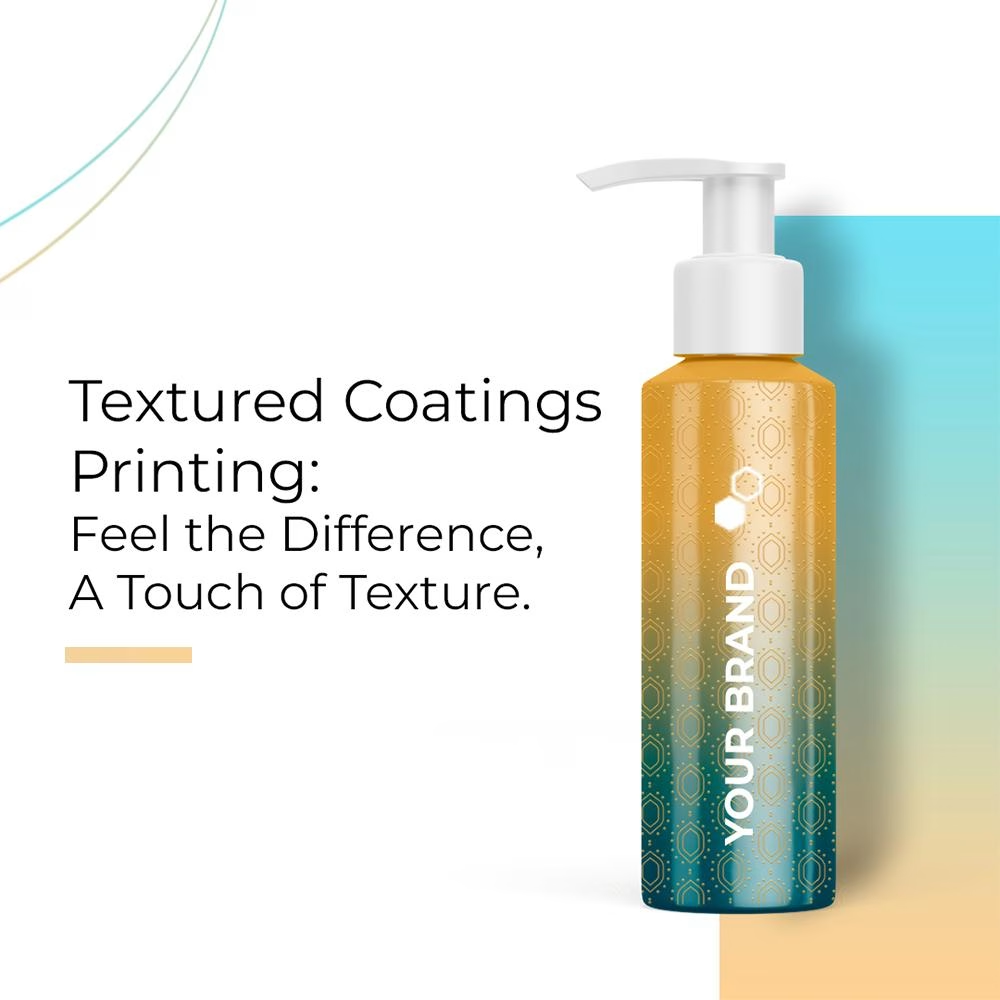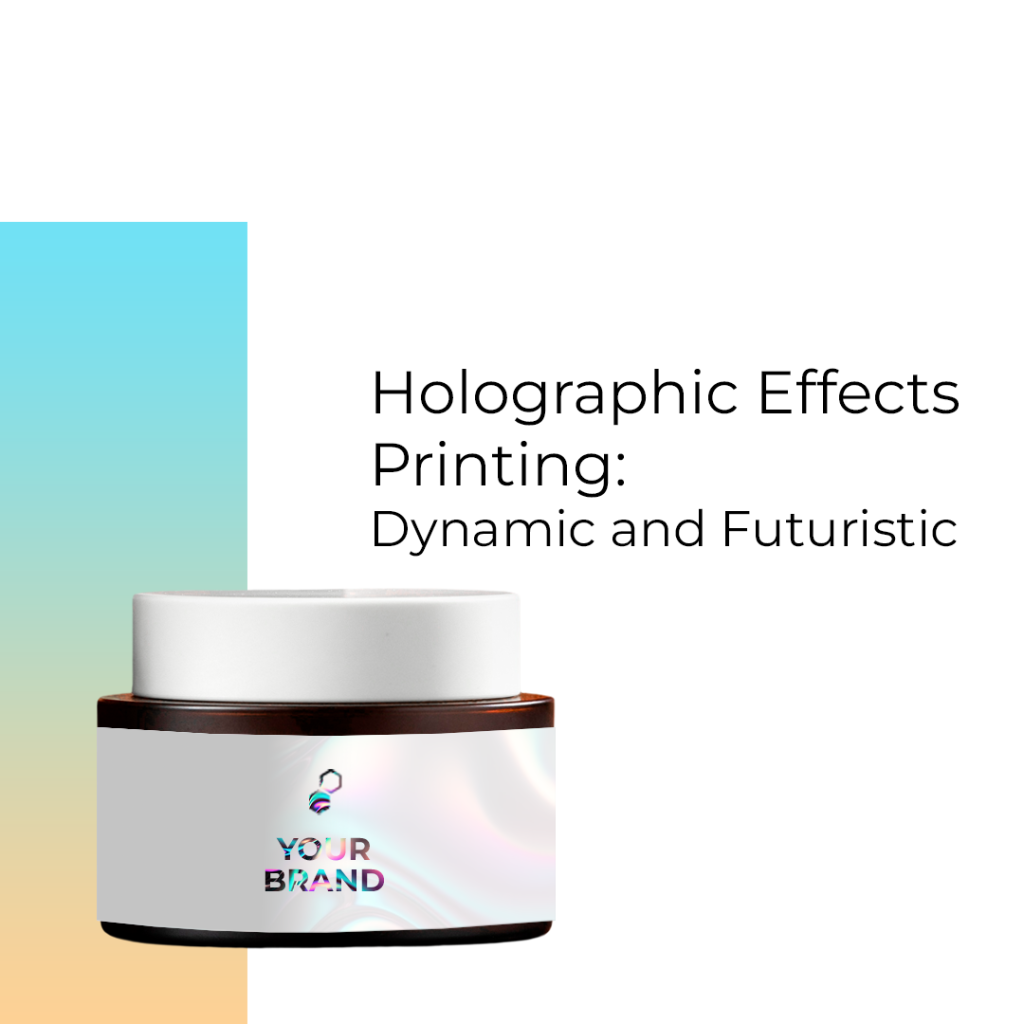
Print Effects on Cosmetic Labels: Enhance Your Brand Identity
Introduction
The Importance of Label Design in the Cosmetic Industry
Label design plays a crucial role in the cosmetic industry as it directly influences consumer perception and purchasing decisions. A well-designed label not only communicates the brand’s identity but also differentiates the product from competitors on the shelf. In a market driven by aesthetics and first impressions, the label must convey quality, luxury, and the brand’s ethos.
How Print Effects Enhance Brand Identity and Appeal
Print effects are powerful tools for enhancing the visual and tactile appeal of cosmetic labels. They add depth, texture, and sophistication, making the product more attractive to potential buyers. Print effects can also reinforce a brand’s identity by aligning the label design with the brand’s values, whether it’s luxury, sustainability, or innovation.
Overview of Popular Print Effects in Cosmetic Labels
This section will introduce the various print effects that are commonly used in the cosmetic industry, such as embossing, foil stamping, spot UV, and holographic effects. Each of these effects offers unique benefits and can be used to achieve different design goals, from creating a premium look to adding a fun, interactive element to the packaging.
Understanding the Basics of Cosmetic Label Printing
What is Label Printing?
Label printing refers to the process of producing labels that are affixed to products, providing essential information such as the brand name, product details, and regulatory information. The printing process involves choosing the suitable materials, inks, and printing techniques to achieve the desired look and functionality.
Critical Materials Used in Cosmetic Labeling
The materials used in cosmetic labels can vary, but they typically include paper, film, and foil. Paper labels are standard for their versatility and cost-effectiveness, while film labels offer durability and resistance to moisture. Foil materials are often used in luxury cosmetics to create a high-end appearance.
The Role of Technology in Modern Label Printing
Advances in technology have revolutionized label printing, making it possible to achieve more intricate designs and effects. Digital printing, laser cutting, and 3D printing are just a few examples of how technology is pushing the boundaries of what can be achieved with cosmetic labels, allowing brands to create truly unique and eye-catching designs.
Embossing and Debossing
Definition and Process: Embossing involves creating a raised design on the label, while debossing creates an indented design. Both effects are achieved using a metal die that presses the design into the label material. These techniques add a tactile element to the label, making it more engaging to the touch.
Applications in Cosmetic Labels: Embossing is often used for logos, brand names, or intricate patterns, giving the label a premium feel. Debossing, on the other hand, can be used to create subtle, elegant designs that add depth without overpowering the overall look.


Spot UV Coating
What is Spot UV? Spot UV is a printing technique that applies a glossy coating to specific areas of the label, creating a contrast between the coated and uncoated areas. This effect draws attention to particular design elements, such as logos or product names.
Benefits of Using Spot UV on Labels: Spot UV enhances the visual appeal of the label by adding depth and dimension. It also improves the durability of the label, making it resistant to wear and tear.
Foil Stamping
Overview of the Technique: Foil stamping is a process where a thin layer of metallic foil is applied to the label using heat and pressure. This effect is commonly used to add a touch of luxury and sophistication to cosmetic labels.
Why Foil Stamping is Popular in Cosmetics: The reflective qualities of foil stamping make it ideal for highlighting key elements such as the brand name or logo. It’s trendy in the luxury segment, where it conveys a sense of exclusivity and high quality.


Matte and Gloss Finishes
Differences Between Matte and Gloss: Matte finishes offer a non-reflective, smooth surface, while gloss finishes are shiny and reflective. Each finish creates a different visual effect and can be used to convey different brand messages.
Choosing the Right Finish for Your Product: Matte finishes are often associated with elegance and sophistication, making them ideal for high-end products. Gloss finishes, on the other hand, are more vibrant and eye-catching, making them suitable for products that aim to stand out on the shelf.
Textured Coatings
Creating Unique Textures on Labels: Textured coatings can be applied to create various tactile effects, from rough and gritty to soft and smooth. These coatings add a sensory dimension to the label, making it more memorable.
Tactile Appeal and Its Impact on Consumer Interaction: Textured labels invite consumers to touch and feel the product, which can create a stronger emotional connection and increase the likelihood of purchase.


Holographic Effects
How Holography Works on Labels: Holographic effects are created by applying a holographic film to the label. This film diffracts light to create a rainbow-like effect, adding a dynamic and futuristic look to the packaging.
The Appeal of Holographic Labels in Beauty Products: Holographic labels are particularly popular in the beauty industry because they convey innovation and modernity. They are often used for products aimed at a younger audience or those that emphasize cutting-edge formulations.
Digital Printing Techniques
Advances in Digital Printing for Labels: Digital printing allows for high-quality, full-colour labels to be printed quickly and efficiently. Advances in digital printing technology have made it possible to create intricate designs with sharp details and vibrant colours.
Cost and Efficiency Benefits of Digital Printing: Digital printing is cost-effective, especially for small to medium print runs. It also allows for easy customization, making it an excellent choice for brands that want to create personalized or limited-edition labels.

Matching Print Effects with Brand Identity
Aligning Print Effects with Target Audience
It’s essential to choose print effects that resonate with your target audience. For example, luxury brands may opt for foil stamping and soft-touch coatings to convey elegance. In contrast, brands targeting younger consumers might choose holographic effects or glow-in-the-dark inks to appeal to a sense of fun and innovation.
The Role of Color in Print Effects
Colour is a critical component of label design, and different print effects can enhance or alter the perception of colour. Metallic inks, for example, can add a luxurious sheen, while matte finishes can mute colours for a more understated look. Consider how the chosen print effect will interact with your colour palette to ensure it aligns with your brand identity.
Ensuring Consistency Across Product Lines
Consistency is critical when creating labels for a product line. While different products may feature different print effects, it’s essential to maintain a cohesive look across all labels. This could mean using a consistent colour scheme, font, or design style, even if the print effects vary.
The Environmental Impact of Cosmetic Label Printing
Eco-Friendly Materials and Inks
As consumers become more environmentally conscious, many brands are turning to eco-friendly materials and inks for their labels. Recycled paper, biodegradable films, and water-based inks are just a few examples of sustainable options that can reduce the environmental impact of your labels.
Sustainable Printing Practices
Sustainable printing practices involve reducing waste, conserving energy, and using environmentally friendly materials. Digital printing, for example, produces less waste than traditional methods and can be more energy-efficient. Brands should consider how their printing processes align with their overall sustainability goals.
How to Balance Aesthetics with Sustainability
While sustainability is important, it’s also essential to ensure that your labels are visually appealing and functional. The challenge lies in finding materials and printing methods that meet both aesthetic and environmental goals. Brands may need to experiment with different combinations to achieve the right balance.
Cost Considerations for Different Print Effects
Factors Influencing Cost
Several factors can influence the cost of label printing, including the complexity of the design, the materials used, the print effects chosen, and the quantity ordered. More intricate effects, such as embossing or holography, tend to be more expensive than standard printing techniques.
Budgeting for High-End Print Effects
When budgeting for label printing, it’s essential to consider the potential return on investment. High-end print effects can increase the perceived value of your product, which may justify the higher cost. Brands should evaluate the impact of premium labels on sales and brand image to determine whether the investment is worthwhile.
ROI of Investing in Premium Label Printing
Investing in premium label printing can lead to a higher return on investment if it helps differentiate your product in a crowded market. High-quality labels can attract more attention, enhance brand perception, and ultimately drive sales. However, it’s important to weigh these benefits against the increased production costs.
Conclusion
Recap of the Importance of Print Effects
Print effects are a powerful tool in cosmetic label design, offering a way to enhance the visual and tactile appeal of your products. They can elevate your brand, differentiate your products, and create a lasting impression on consumers.
Final Thoughts on Selecting the Best Print Effects for Cosmetic Labels
When selecting print effects, consider your brand identity, target audience, and the message you want to convey. The right combination of effects can make your product stand out and reinforce your brand’s values and positioning.
Encouragement to Experiment and Innovate in Label Design
Don’t be afraid to experiment with different print effects and push the boundaries of traditional label design. Innovation in label printing can set your brand apart in the competitive cosmetic market, creating a unique and memorable consumer experience.
Frequently Asked Questions (FAQs)
Airless pumps protect the product from air exposure, preventing oxidation and contamination, which is crucial for maintaining the efficacy of sensitive skincare formulations.
Foaming pumps dispense product in a foam form, which can reduce the amount of product used per application, leading to less waste and longer product life.
Considerations include the product’s viscosity, user convenience, product safety, brand aesthetics, and environmental impact.
Child-resistant packaging prevents accidental ingestion of potentially harmful products by making them difficult for children to open, enhancing safety.
Plastic can contribute to pollution if not recycled, while glass and metal are more sustainable but heavier and more costly to transport. Choosing recyclable or biodegradable materials is crucial for reducing environmental impact.
Attractive and functional packaging can enhance the perceived value of a product, create a memorable unboxing experience, and build brand loyalty.
Current trends include eco-friendly materials, personalized packaging, interactive and smart packaging, and designs that reflect minimalism and luxury.


